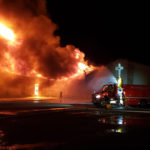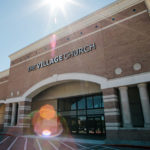WACO—The ways churches respond to white flight can have “unfortunate, unintended consequences” both for congregations and the communities they serve, a Baylor University sociologist told a Christian community development conference.

“Change is constant. How we respond to change is highly variable,” Kevin Dougherty, professor of sociology at Baylor, told the No Need Among You Conference at First Baptist Church in Waco.
“Demographic churning” and “residential segregation by race” are realities congregations must address, Dougherty said.
In the first round of white flight after World War II, Anglos relocated from racially mixed urban centers to largely white suburbs, and they often started churches that reflected the community’s homogeneity.
In more recent decades, upwardly mobile non-Anglos have moved to suburbs, and whites have left the older inner suburbs to more distant suburban or rural areas, Dougherty explained.
In the process, the ethnic and racial composition of neighborhoods surrounding existing churches has changed.
Catholic churches continued to hold to the parish model, in which a congregation serves a specific geographic area within a larger diocese. Meanwhile, many Protestant churches specialized, adopting the language and strategy of corporate America by seeking to appeal to “niche markets” and “target audiences” based on shared interests, Dougherty observed.
“They cater to narrow interests, resulting in congregations where worshippers tend to look and think a lot alike,” he said.
In many instances, these congregations not only become racially and ethnically segregated, but also function as “political echo chambers,” he noted.
Sign up for our weekly edition and get all our headlines in your inbox on Thursdays
How churches deal with changing demographics
Dougherty cited groundbreaking research by sociologist Nancy Ammerman in the 1990s, as well as his own more recent studies of congregations and how they deal with demographic change.
One approach many congregations take is to persist in doing what they always have done. Dougherty sees denial and failure to change as recipes for congregational decline and death.
“They may limp along for a while, but that is a doomed strategy,” he said.
Another approach some congregations have adopted is relocation—moving from the church’s old neighborhood to rebuild in a new location removed from the area it originally served.
“This often has accelerated white flight and worked against the stability of the neighborhoods they left,” Dougherty said.
A third approach involves remaining in the neighborhood where a church originally was planted and adapting to change in the community. In many cases, this has involved new programming, new leadership and even a new identity for the congregation.
Some encouraging data
Dougherty cited an encouraging study of 20,000 United Methodist congregations from 1990 to 2010. While the United Methodist Church as a whole suffered losses in attendance, research revealed racial diversity within a congregation is associated with higher average attendance over time.
If a church seeks to adapt to meet the needs of its changing neighborhood, those who seek to facilitate and lead the adaptation can expect resistance, he acknowledged.
“Adaptation is harder for older congregations,” he acknowledged. “But to do nothing is a guaranteed path to decline.”
Dougherty encouraged congregations in demographically changing neighborhoods to consider how they might have a continuing relevant presence in those areas.
“God planted your church in a particular neighborhood,” Dougherty said. “Become more a community of place.”














We seek to connect God’s story and God’s people around the world. To learn more about God’s story, click here.
Send comments and feedback to Eric Black, our editor. For comments to be published, please specify “letter to the editor.” Maximum length for publication is 300 words.